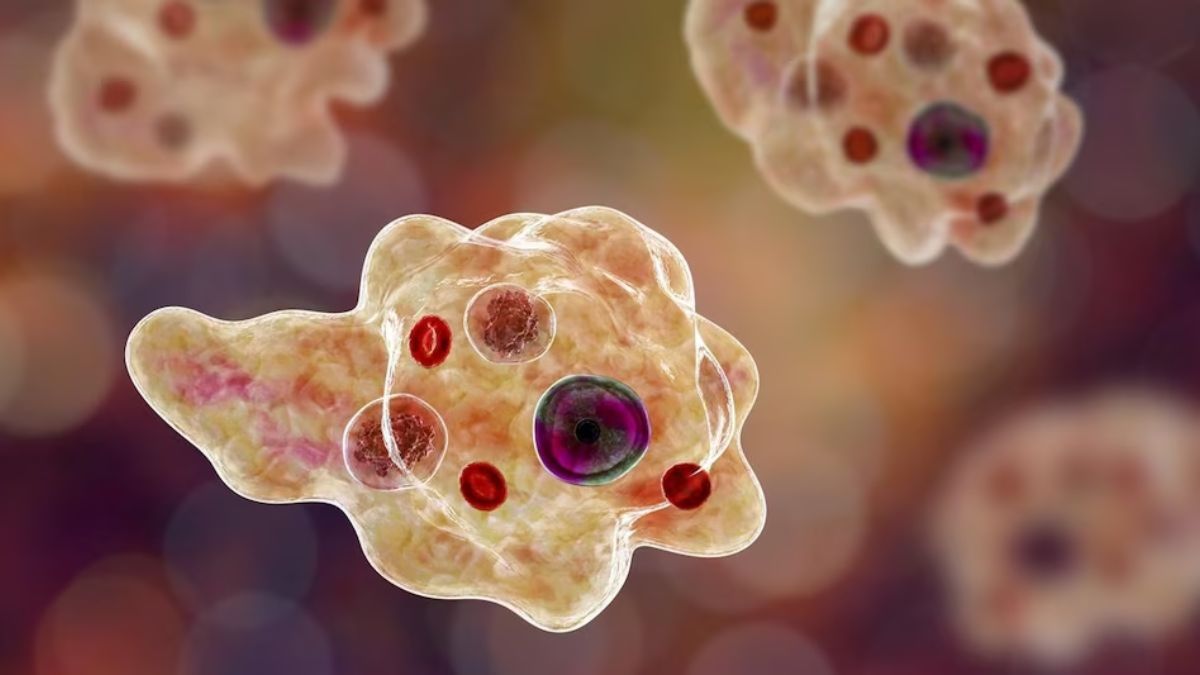
A 12-year-old boy from Feroke, Kerala, who had been receiving treatment for primary amoebic meningoencephalitis at a private hospital in Kozhikode, passed away on the night of July 4. This marks the third death from this rare and deadly infection in Kerala within the last two months.
Table of Content:-
Cases Of Brain Eating Amoeba In Kerala
The boy, identified as EP Mridul, a Class VII student at Farook Higher Secondary School, initially experienced headache and vomiting and was admitted to the government taluk hospital in Feroke. It was reported that he had bathed in a local pond near Farook College. Due to the severity of his condition, he was later transferred to the Government Medical College Hospital in Kozhikode and then to a private hospital. Mridul had been in critical condition since June 24.
Earlier cases include V Dakshina, a 13-year-old from Kannur, who died on June 12, and Fadva, a 5-year-old from Munniyur, Malappuram, who died on May 20, both also treated at Kozhikode hospitals.

Kerala Health Department’s Response To Brain Eating Amoeba
In response to these tragic incidents, the Kerala Health Department is set to release special guidelines for treating this infection.
The Health Department has advised against bathing in ponds or stagnant water for children with ear infections and has recommended regular chlorination of swimming pools and water theme parks.
What Is Brain Eating Amoeba?
While the term "brain-eating amoeba" sounds like something out of science fiction, Naegleria fowleri is a very real organism that can cause a devastating infection. This free-living amoeba lurks in warm freshwater environments like lakes, rivers, and hot springs.
According to the Centres For Disease Control and Prevention (CDC), infection occurs when the amoeba enters the body through the nose, travels to the brain, and causes brain tissue destruction and swelling.
This infection, known as primary amebic meningoencephalitis (PAM), is a rapidly progressing and often fatal illness. Symptoms include:
- Headache
- Fever
- Nausea
- Vomiting
- Altered mental status
- Seizures
- Coma
Early signs of PAM can be easily mistaken for the flu, including headache, fever, nausea, and vomiting. Due to the rarity of the infection and the non-specific initial symptoms, diagnosis can be challenging. The CDC says, ‘Typically, fewer than 10 people a year in the United States get PAM. Nearly everyone who gets PAM dies from it.’

Reducing The Risk Of Brain Eating Amoeba
Here are some safety precautions to minimise your risk of encountering Naegleria fowleri:
- Protect your nose: Consider plugging your nose or using a nose clip when engaging in activities like jumping or diving in freshwater sources. This helps prevent contaminated water from entering your nasal passages.
- Head above water in hot springs: Avoid submerging your head entirely in hot springs, as these environments are prime breeding grounds for the amoeba.
- Stay clear of shallow waters: Naegleria fowleri tends to thrive in warmer, less circulated water found in shallow areas. Avoid stirring up sediment or digging in these spots.
- Safe nasal practices: When rinsing your sinuses or cleansing your nasal passages, opt for distilled or boiled tap water to eliminate any potential amoeba presence.
Also Read: Naegleria Fowleri: Know About A Deadly Brain Eating Amoeba
While the Kerala Health Department is working to reduce the risk of this brain eating amoeba, the young lives lost are a tragedy and highlight the importance of sanitation and awareness of pathogens. If you suspect you or someone you know has been exposed and is experiencing these symptoms after swimming in warm freshwater, immediate medical attention is crucial.
Also watch this video
How we keep this article up to date:
We work with experts and keep a close eye on the latest in health and wellness. Whenever there is a new research or helpful information, we update our articles with accurate and useful advice.
Current Version
